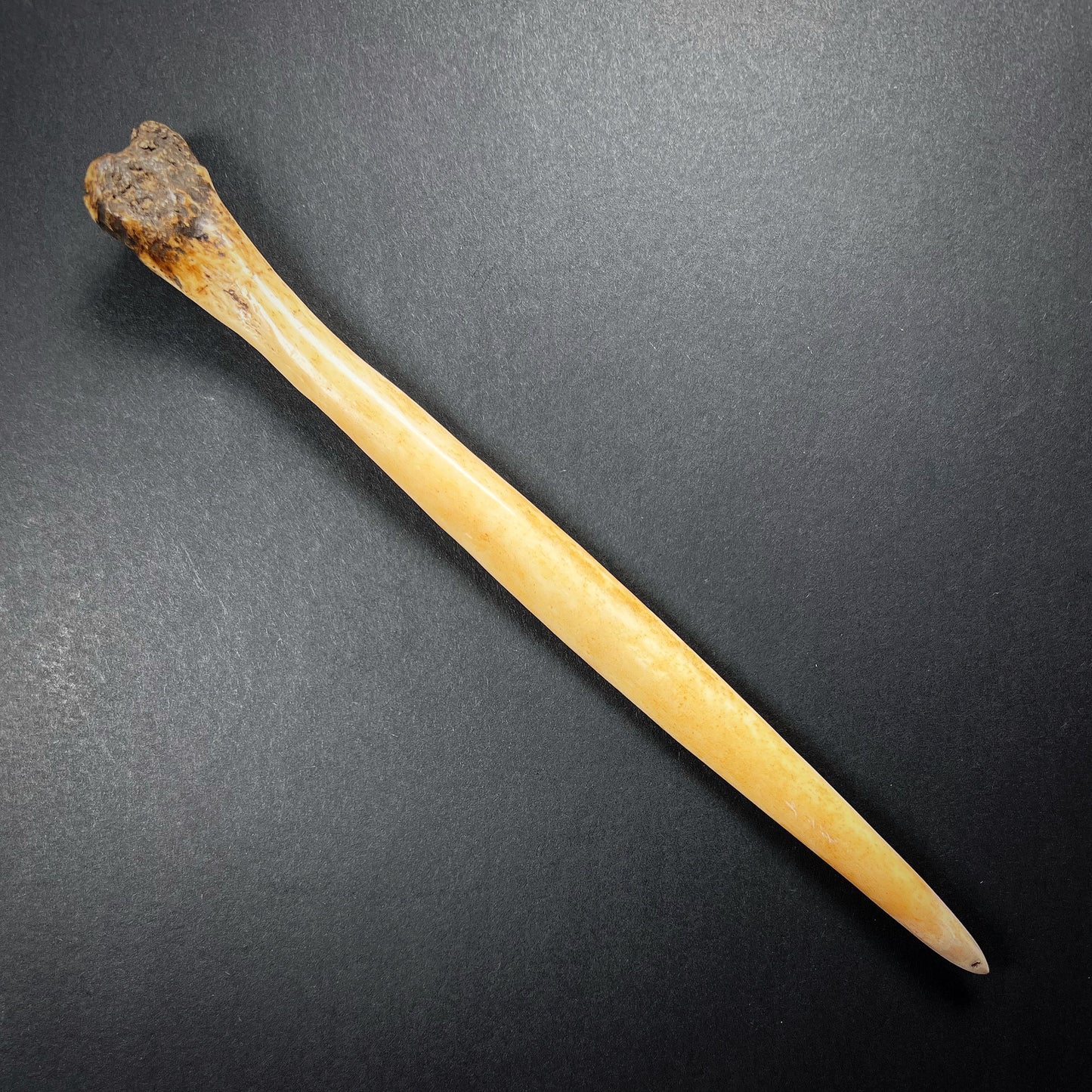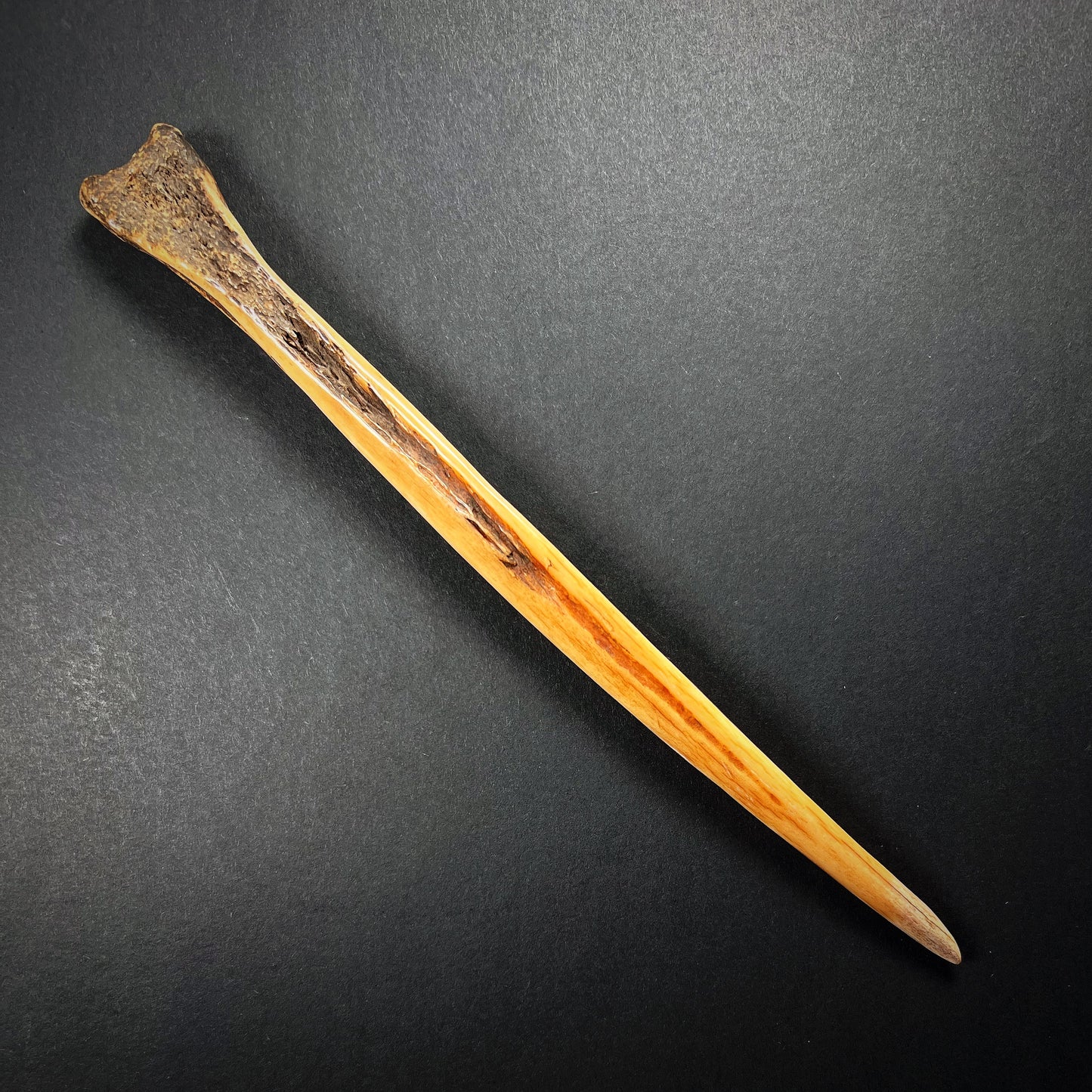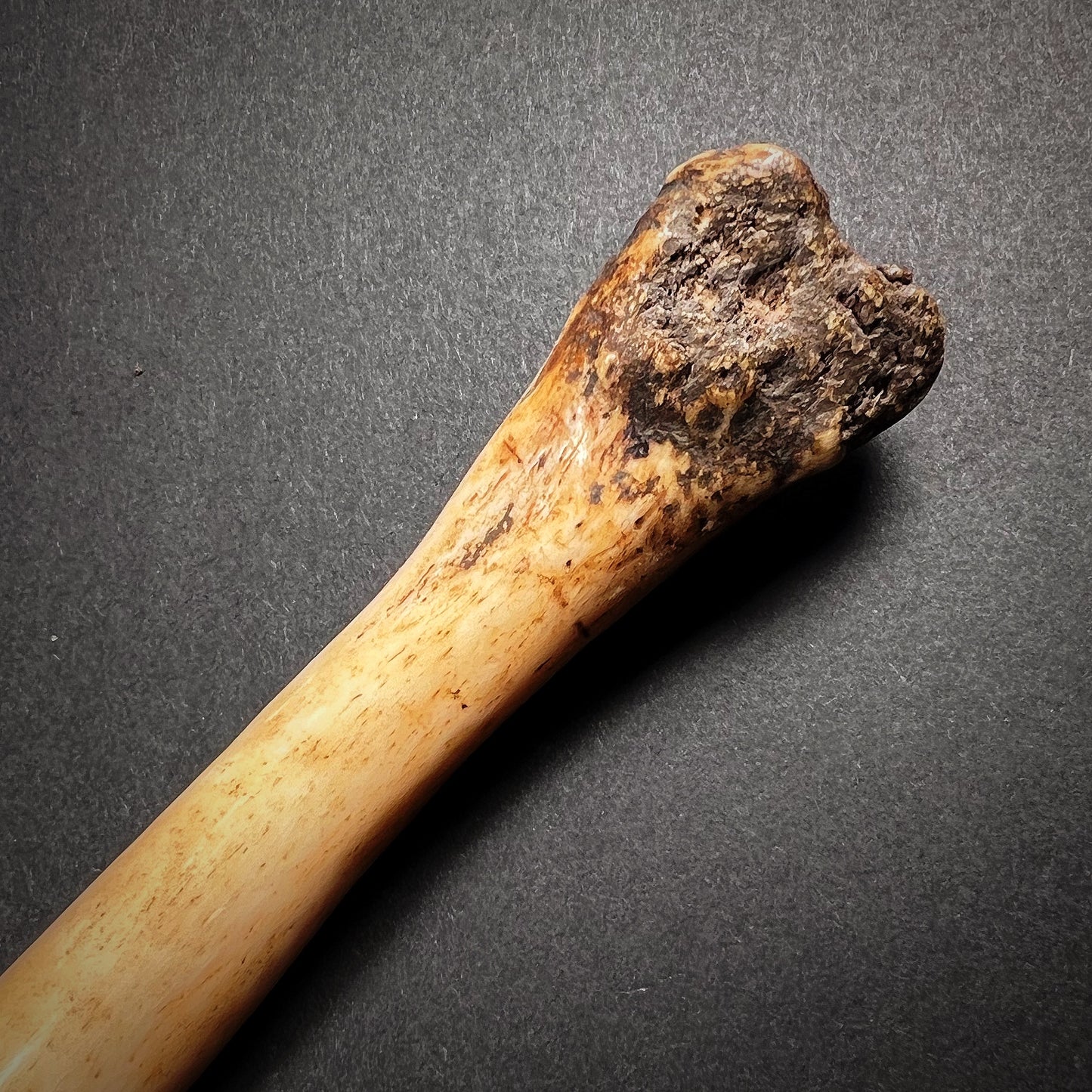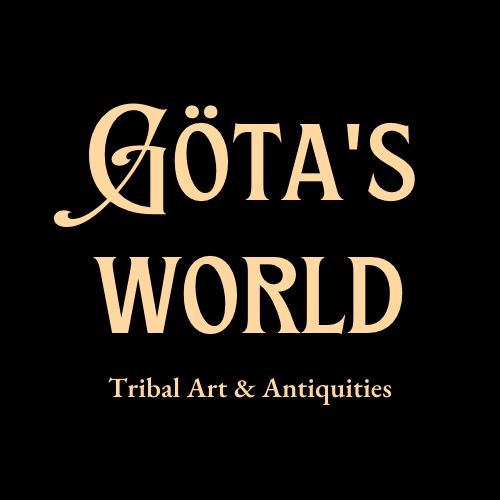Asmat Cassowary Bone Dagger (Pi Pisuwe)
Asmat Cassowary Bone Dagger (Pi Pisuwe)
Couldn't load pickup availability
Asmat people, early to mid-20th century, Irian Jaya (Papua), Indonesia
A superb early cassowary bone dagger. Daggers of this type are known as pi pisuwe, while those carved from human femur were reserved for the most sacred and high-status contexts. Although carried during displays of warfare, bone daggers were principally used in ritual killings, initiations, and ceremonial attire, symbolising courage, prestige and ancestral power.
The Asmat inhabit the swampy lowlands of southwestern Papua and comprise twelve closely related sub-groups bound by a shared artistic and cultural heritage. Villages are built from abundant local timber, with everyday houses (tsyem) complemented by at least one men’s house (jeu), the ritual heart of the community. Their subsistence traditionally centres on sago, forest game and river resources, with mud, water and wood shaping nearly every aspect of Asmat material culture.
Internationally renowned for their expressive wood sculpture, the Asmat are also historically associated with practices of headhunting, once essential to warfare, initiation rites and maintaining cosmological balance. These traditions gained worldwide attention following the 1961 disappearance of Michael Rockefeller, an event long surrounded by speculation and later explored in Carl Hoffman’s Savage Harvest.
The Asmat traditionally practised animism, believing spirits inhabited natural features and ancestral realms. Rituals aimed to maintain harmony within this spirit-charged landscape, with warfare and woodcarving deeply woven into the fabric of belief.
Good condition. Deep glossy patina throughout from generations of use and handling. Size approx. 22,5cm x 2,2cm x 1,0cm.
Provenance: From a Dutch private collection; reportedly originally from the holdings of a now-closed ethnographic museum and foundation in the Netherlands.
For a similar examples see:
Dagger, The British Museum, Accession Number: Oc1934,0316.90 (https://www.britishmuseum.org/collection/object/E_Oc1934-0316-90)
Papua New Guinea Dagger(cassowary tibiotarsus), Medical History Museum, Accession Number: MHM02531 (https://collections.mdhs.unimelb.edu.au/objects/5827/papua-new-guinea-daggercassowary-tibiotarsus)
References and further reading:
The Asmat Museum of Culture and Progress, Tobias Schneebaum, Cultural Survival Quarterly Magazine, December 1982.
Oceania, Encyclopedia of World Cultures, Peter and Kathleen Van Arsdale, ed. by Terence Hays, G.K. Hall & Company, 1991.
Asmat Art: Seventy years of Asmat woodcarving, Simon Kooijman, Pacific Arts Newsletter No.4, January 1977, pp. 9-11.
Art and Culture of the Asmat, Holmes Museum of Anthropology, Wichita States University, 2021.
Headhunting Practises of the Asmat of Netherlands New Guinea, Gerard A. Zegwaard, American Anthropologist New Series, Vol.61, No.6, December 1959, pp. 1020-1041.
"The Asmat", In Heilbrunn Timeline of Art History, Emily Caglayan, Ph.D., Department of Art History, The Graduate Center, City University of New York, The Metropolitan Museum of Art, 2000-, October 2004.
Savage Harvest: A Tale of Cannibals, Colonialism, and Michael Rockefeller's Tragic Quest for Primitive Art, Carl Hoffman, Publisher William Morrow, 2014.



-
Shipping
The shipment will be prepared in the course of 3-5 days and dispatched via Posti Group Oyj or purchased item(s) can be picked up from our shop during the store's opening hours (Tarkk’ampujankatu 4, 00140, Helsinki, Finland). Within the Finland, all items are shipped via Posti Group Oyj unless otherwise requested. We pack the items carefully and mainly in recycled materials because we want to save nature. You will receive the tracking number for your items by e-mail.
-
Returns
Returns and exchange will be accepted within fourteen days (14) of receipt at the purchaser’s cost to include freight and packaging. Items must be returned in the same condition as when they were shipped, and will not be accepted if damaged or altered in any way. Please inform us via email (info@gotanmaailma.fi) or by calling +358408408352 before sending. We do not accept returns more than 14 days after delivery.



